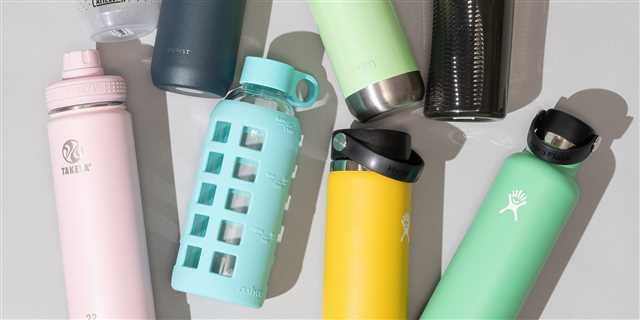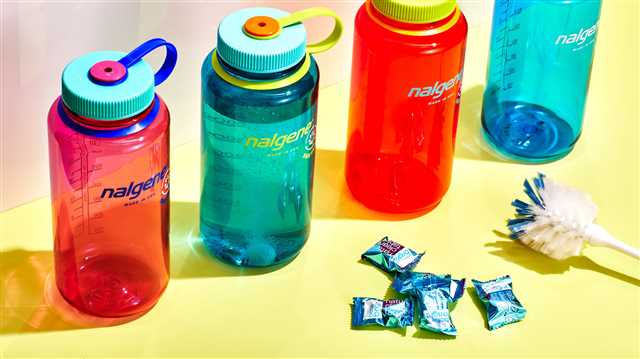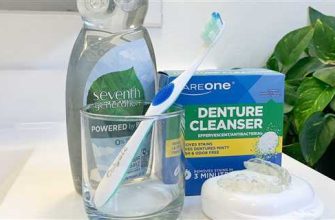
When it comes to keeping your flask clean and sparkling, there are a few tried-and-tested methods that can work wonders. Whether you use it for your morning coffee or for sipping on a refreshing drink during outdoor adventures, a clean flask is a valuable weapon in your arsenal of kitchen supplies. In this article, we’ll share some of the best tips for cleaning a flask using bicarbonate of soda, rice, or vinegar.
Let’s start with bicarbonate of soda, also known as baking soda. This white, powdery substance is a great cleaning agent and can help remove odors and stains from your flask. Simply fill the flask halfway with warm water and add a tablespoon of bicarbonate of soda. Give it a good shake and let it sit for a few hours or overnight. Then, rinse it out with warm water and dry it with a soft towel. Your flask will be as good as new!
Another effective method for cleaning a flask is using rice. Yes, you read that right – rice! Rice is a natural abrasive that can help scrub away dirt and grime. Fill your flask about halfway with warm water and add a few tablespoons of uncooked rice. Shake it vigorously for a few minutes, making sure the rice reaches all the corners. Then, rinse it out and dry it with a soft towel. Your flask will look shiny and clean!
If you’re dealing with limescale buildup, vinegar can be your best friend. Vinegar is known for its acidic properties that can dissolve mineral deposits. Simply fill your flask with equal parts water and vinegar, then let it sit for a few hours or overnight. Rinse it out thoroughly with warm water and dry it with a soft towel. The limescale will be gone, and your flask will be fresh and ready for use.
Remember, cleaning and maintaining your flask not only ensures its longevity, but also keeps it hygienic for your daily use. So, whether you prefer the bicarbonate of soda, rice, or vinegar method, follow these easy tips and enjoy a clean and odor-free flask!
- Easy Tips for Cleaning a Flask
- Using Bicarb, Rice, or Vinegar
- Bicarb
- Rice
- Vinegar
- How to Wash a Flask in a Dishwasher
- Step 1: Check if your flask is dishwasher-safe
- Step 2: Pre-fill your flask
- Step 3: Remove the lid and stopper
- Step 4: Load your flask in the dishwasher
- Step 5: Select the appropriate dishwasher cycle
- Step 6: Dry and inspect your flask
- Cleaning a Flask with Rice
- Cleaning a Flask with Washing Up Liquid
- How to Clean a Flask
- 1. Warm Water and Soap
- 2. Pre-Fill with Hot Water
- 3. Vinegar and Baking Soda
- 4. Rice and Bicarb
- 5. Soft-Bristled Brush
- 6. Keep the Lid Clean
- 7. Avoid Dishwashers
- 8. Read the Instructions
- Using Bicarbonate of Soda
- Video:
- How to Clean burnt pans and pots Just in 5 minutes 100% guaranteed
Easy Tips for Cleaning a Flask
Cleaning a flask can be a daunting task, but with the right tools and methods, it doesn’t have to be a headache. Here are some easy tips to keep in mind for a thorough clean:
- Use Bicarb as a handy little weapon: Bicarbonate of soda (bicarb) is a versatile cleaner that can remove stubborn stains and odors. Simply mix bicarb with warm water to create a paste, then use a bottle brush or sponge to scrub the inside of your flask.
- Fight limescale with vinegar: If your flask has limescale buildup, vinegar can come to the rescue. Fill the flask halfway with vinegar, then shake it vigorously. Let it sit for a couple of hours to dissolve the limescale, then rinse it out with water.
- Tackle mould with bleach-based cleaners: If you notice any black mold in your flask, use a bleach-based cleaner to get rid of it. Make sure to follow the instructions on the cleaner and rinse the flask thoroughly before use.
- Wash dishwasher-safe flasks on the top rack: If your flask is labeled as dishwasher-safe, you can simply throw it in the dishwasher. However, if it has a stopper or is made of double-walled glass, it’s best to wash it by hand to avoid potential damage.
- Grab a dishwashing brush for quick cleaning: A dishwashing brush with soft bristles can be a great tool for everyday cleaning. Use it to scrub the inside of your flask with warm soapy water and rinse it off.
- Air-dry your flask: After washing your flask, make sure to air-dry it completely before storing it. This will help prevent any unpleasant odors or bacteria growth.
Cleaning a flask doesn’t have to be a chore. With these easy tips, you’ll have your flask looking and smelling fresh in no time!
Using Bicarb, Rice, or Vinegar
If you have a flask or thermos that needs a deep clean, you may be wondering what the best method is. Well, look no further! In this article, we’ll discuss three easy ways to clean your flask using bicarb, rice, or vinegar.
Bicarb
Bicarbonate of soda, or bicarb for short, is a great cleaning agent for flasks. It can help remove stains and odors, leaving your flask looking and smelling fresh. Here’s how to use bicarb for cleaning:
- Start by rinsing your flask with hot water to remove any loose debris.
- Mix a solution of bicarb and water, using about 1 tablespoon of bicarb for every cup of water.
- Pour the solution into your flask and give it a good shake, making sure to coat the entire inside of the flask.
- Leave the solution in the flask for about 30 minutes to an hour, allowing it to work its magic.
- After the time is up, give your flask a thorough wash with warm, soapy water. Use a soft-bristled brush or sponge to scrub away any remaining dirt or stains.
- Rinse your flask well with clean water and let it air-dry completely before using it again.
Rice
If your flask has stubborn stains or odors that are hard to remove, rice can be a great option. Here’s how to clean your flask using rice:
- Start by rinsing your flask with hot water to remove any loose debris.
- Fill the flask about halfway with uncooked rice.
- Add some warm water to the flask and give it a good shake.
- Let the rice and water mixture sit in the flask for a few minutes, allowing the rice to scrub away any dirt or stains.
- Drain the rice and rinse your flask well with warm, soapy water. Use a soft-bristled brush or sponge to remove any remaining dirt or stains.
- Rinse your flask with clean water and let it air-dry completely.
Vinegar
Vinegar is a versatile household cleaner that can be used to clean a variety of surfaces, including flasks. Here’s how to clean your flask with vinegar:
- Start by rinsing your flask with hot water to remove any loose debris.
- Fill the flask about a quarter of the way with white vinegar.
- Add some warm water to the flask until it is almost full.
- Give the flask a good shake to distribute the vinegar and water mixture.
- Let the flask sit for a few hours or overnight, allowing the vinegar to work its magic on any stains or odors.
- After the soaking time is up, rinse your flask well with warm, soapy water. Use a soft-bristled brush or sponge to remove any remaining dirt or stains.
- Rinse your flask with clean water and let it air-dry completely.
Whether you choose to use bicarb, rice, or vinegar, following these simple steps will help keep your flask clean and germ-free. It’s important to clean your flask regularly, especially if you use it for beverages other than water. By washing it daily and giving it a deep clean every now and then, you’ll keep your flask in tip-top shape.
How to Wash a Flask in a Dishwasher
Washing a flask in a dishwasher is a convenient and easy way to keep it clean. However, it is important to follow some guidelines to ensure that your flask stays in tip-top condition and free from any damage.
Step 1: Check if your flask is dishwasher-safe
Before using your dishwasher to clean your flask, check if it is dishwasher-safe. Some flasks, especially those made of glass or with special coatings, may not be suitable for dishwasher cleaning. Refer to the manufacturer’s instructions or labeling to determine if your flask can be washed in a dishwasher.
Step 2: Pre-fill your flask
Prior to placing your flask in the dishwasher, it is recommended to pre-fill it with warm soapy water. This helps in loosening any dirt or residue from the inside of the flask and makes the cleaning process more effective.
Step 3: Remove the lid and stopper

Take off the lid and stopper from your flask. Pay close attention to any rubber or silicone components, as they may not be dishwasher-safe. To ensure their longevity, it is best to wash them separately by hand using warm soapy water.
Step 4: Load your flask in the dishwasher
Place your flask upside down on the top rack of the dishwasher. This prevents water from pooling inside and allows for better drying. It is recommended to position the flask away from any other dishes or utensils to avoid potential damage or scratches.
Step 5: Select the appropriate dishwasher cycle
Choose a dishwasher cycle that is suitable for your flask. Opt for a gentle or delicate cycle to prevent any potential damage. Avoid using any bleach-based dishwasher detergents, as they may cause discoloration or harm to the flask’s material.
Step 6: Dry and inspect your flask
Once the dishwasher cycle is complete, remove your flask and examine it for cleanliness. If there are any remaining stains or residue, repeat the washing process if necessary. Use a soft towel or let it air dry before reassembling the flask.
By following these simple steps, you can keep your flask clean and germ-free, whether it is a stainless steel or glass one. Washing your flask in a dishwasher saves time and effort and ensures that it is ready for use whenever you need it.
Cleaning a Flask with Rice
If you’re looking for a quick and easy way to clean your flask, cleaning it with rice might be just what you need. Rice is a natural and inexpensive cleaning agent that can help remove stains, odors, and residue from the inside of your flask.
Here’s a step-by-step guide on how to clean a flask with rice:
- Start by rinsing out your flask with hot water to get rid of any leftover liquid or residue. Make sure to remove the stopper or lid if your flask has one.
- Fill the flask about halfway with warm water. Remember not to fill it up completely, as you’ll need some space for the rice to move around.
- Add a tablespoon of dishwashing liquid or vinegar to the water. This will help break down any greasy or sticky residue.
- Add a handful of uncooked rice to the flask. The rice will act as an abrasive and help scrub away any dirt or stains.
- Put the stopper or lid back on the flask and give it a good shake. Make sure to hold onto the stopper tightly to prevent any leaks or spills.
- Shake the flask vigorously for a few minutes, making sure to move the rice around all areas of the flask.
- Once you’re done shaking, pour out the rice and water mixture. You’ll notice that the rice has turned brown, indicating that it has absorbed dirt and residue from the flask.
- Rinse the flask thoroughly with hot water to remove any remaining rice or soap.
- Inspect the flask to see if it’s clean. If there are still some stubborn stains or odors, you can repeat the process or try using a bottle brush or sponge to scrub the inside.
- Once you’re satisfied with the cleanliness of your flask, let it air dry completely before using or storing it.
Remember, this method is best suited for flasks made of stainless steel or glass. If your flask has a double-walled construction or is dishwasher-safe, it’s always best to follow the manufacturer’s instructions on how to clean it.
Now that you know how to clean a flask with rice, you’ll have a handy weapon to combat those nasty niffs and keep your flask looking and smelling fresh.
Cleaning a Flask with Washing Up Liquid

When it comes to cleaning a flask, there are many different cleaners you can use, from bicarbonate to rice and vinegar. However, if you’re looking for a simple and effective method, washing up liquid is a great option.
To begin, start by emptying the flask of any remaining liquid. If there are any tell-tale straws or attachments, unscrew or remove them to make the cleaning process easier.
Next, rinse the flask with warm water to remove any loose particles or residue that may be inside. This step is especially important if you’ve recently used your flask to store coffee or tea, as these beverages can leave behind stains and odors.
Fill the flask with warm water and add a few drops of washing up liquid. Use a sponge or soft-bristled brush to scrub the inside of the flask, paying extra attention to the bottom and any hard-to-reach areas. If your flask has a double-walled construction, be sure to wash both the inner and outer walls.
After scrubbing, rinse the flask thoroughly with warm water to remove any soap residue. This is an important step to ensure that no leftover soap taste remains in your flask.
To disinfect your flask, you can fill it with a mixture of warm water and a few tablespoons of white vinegar or lemon juice. Allow the mixture to sit for a few minutes to kill any germs or bacteria. Rinse thoroughly afterwards.
After cleaning your flask, leave it to air-dry completely before putting the stopper back on. This will help prevent any nasty smells or bacteria from building up inside.
Remember, it’s always a good idea to clean your flask after each use to keep it looking and tasting fresh. By following these simple steps with washing up liquid, you can ensure your flask stays in top condition for many uses to come.
How to Clean a Flask
Keeping your flask clean and free from mold and bacteria is essential for maintaining its longevity and ensuring your beverages taste their best. Here are some easy tips to help you clean your flask.
1. Warm Water and Soap
For daily cleaning, a simple wash with warm water and mild soap should do the trick. Rinse it well and leave it to air dry.
2. Pre-Fill with Hot Water
If your flask has been sitting empty for a while or if it has a lingering odor, pre-fill it with hot water and let it sit for a few minutes. This will help loosen any residue and make it easier to clean.
3. Vinegar and Baking Soda
If your flask has stubborn stains or odors, you can try using a mixture of vinegar and baking soda. Fill the flask with vinegar, add a tablespoon of baking soda, and let it sit overnight. Rinse it thoroughly with warm water the next morning.
4. Rice and Bicarb
If you don’t have vinegar or baking soda on hand, you can also clean your flask with rice and bicarbonate of soda. Fill the flask halfway with warm water, add a tablespoon of bicarbonate of soda, and a teaspoon of rice. Close the lid and shake vigorously. Rinse it thoroughly afterwards.
5. Soft-Bristled Brush
For deep cleaning, especially if your flask has narrow openings, a soft-bristled brush will come in handy. Use it to scrub the inside of the flask gently, reaching all the nooks and crannies.
6. Keep the Lid Clean
Don’t forget to clean the lid of your flask as well. Remove any rubber seals or straw components and wash them separately. Use a mild soap and warm water to clean the lid thoroughly.
7. Avoid Dishwashers

While some flasks are dishwasher-safe, it’s always best to hand wash them to ensure their longevity. Dishwasher detergents and high temperatures can be harsh on the materials and may affect the insulation properties.
8. Read the Instructions
Always read the manufacturer’s instructions for cleaning your flask to ensure you are using the right cleaning method and not damaging the flask in any way. Different brands may have specific recommendations.
Remember, a clean flask not only looks shiny and nice but also keeps your drinks tasting fresh. With these tips, you’ll have a clean and hygienic flask for all your hydration needs!
Using Bicarbonate of Soda
When it comes to deep cleaning your flask, bicarbonate of soda can be a great ally. This humble kitchen ingredient is not only gentle on your flask but also helps to remove stains, eliminate odors, and keep your flask looking and smelling fresh.
To start, gather all the necessary materials: your dirty flask, a bottle brush or a soft-bristled brush, bicarbonate of soda, and warm water. You may also need a towel or dishcloth for drying.
- First, remove the lid and any additional parts such as straws or stoppers. Rinse them separately under warm water to remove any loose debris or leftover drink residue.
- In a clean sink or basin, prepare a solution of bicarbonate of soda and warm water. A general guideline is to use about 2 tablespoons of bicarbonate of soda for every quart (liter) of water.
- Submerge the flask in the bicarbonate of soda solution, making sure that the entire surface is covered. Allow it to soak for at least 15-30 minutes to help loosen any dirt or stains.
- After soaking, use a bottle brush or a soft-bristled brush to scrub the inside of the flask, paying extra attention to any stubborn stains or limescale buildup. Be gentle yet thorough in your scrubbing.
- Rinse the flask thoroughly with warm water, ensuring that all traces of the bicarbonate of soda solution are removed.
- In the case of stainless steel flasks, you can also use bicarbonate of soda to tackle any lingering odors. After rinsing, fill the flask with warm water and add a teaspoon of bicarbonate of soda. Let it sit for a few hours or overnight before rinsing again.
- Dry the flask using a clean towel or dishcloth. Pay attention to the bottom of the flask, as water tends to collect there. To ensure that all parts are completely dry, you can leave the flask to air-dry for a few hours upside down on a drying rack or dishcloth.
Remember, bicarbonate of soda is not only great for cleaning flasks but also for many other household cleaning tasks. It’s a versatile and affordable cleaning agent that can be used on various surfaces and materials.
If you want to learn more about cleaning and maintaining flasks or need advice on dealing with specific stains or odors, be sure to read articles and resources provided by cleaning experts like Cleanipedia.








